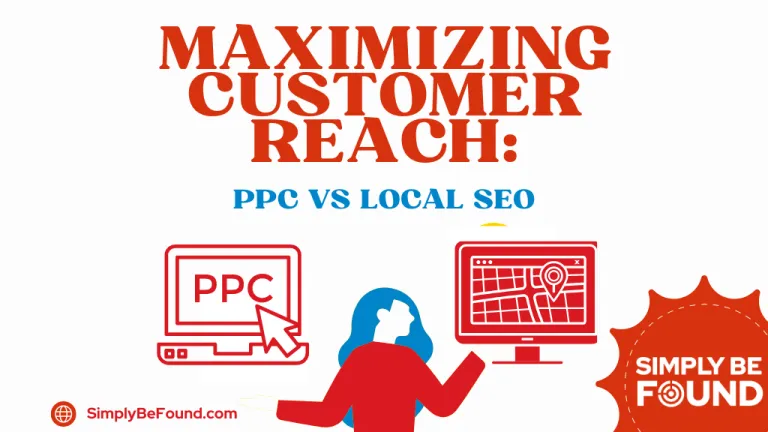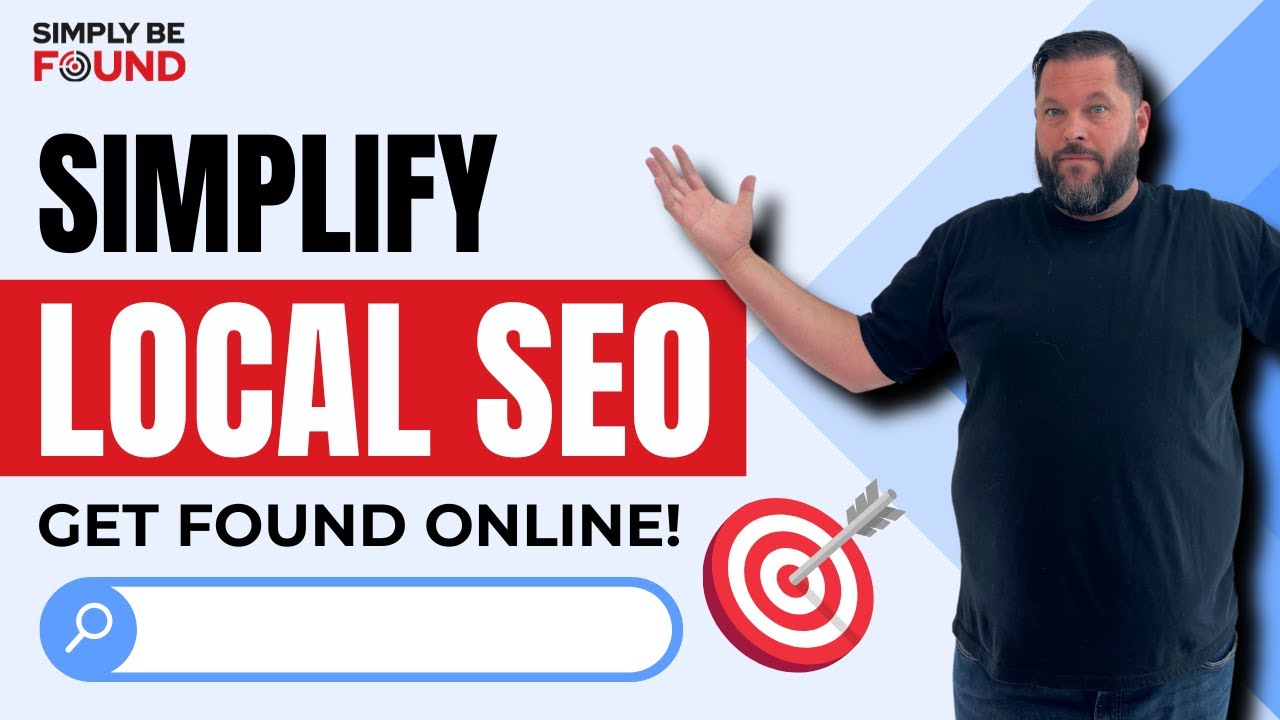Last Updated on: 15th April 2024, 04:58 pm
Table of Contents:
- Introduction
- Pay-Per-Click Cost Per Customer Acquisition
- Factors Affecting PPC Cost Per Lead
- Local SEO Cost Per Customer Acquisition
- Long-Term Benefits of Local SEO
- Comparing PPC vs Local SEO
- Determining Which Method Works Best for Your Business
- Conclusion
Chapter 1: Introduction
The digital age has transformed the way businesses market themselves and reach potential customers. With an ever-increasing number of people using the internet to find products and services, it is crucial for businesses to establish a strong online presence. Digital marketing strategies, such as Pay-Per-Click (PPC) advertising and Local Search Engine Optimization (SEO), have emerged as essential tools for businesses looking to stand out in a crowded online marketplace. See this video for more information.
This ebook aims to provide an in-depth comparison of PPC and Local SEO, focusing on their respective costs per customer acquisition and overall effectiveness in helping businesses grow. By understanding the unique features, advantages, and drawbacks of these marketing strategies, you can make informed decisions about which method is best suited for your business.
PPC advertising is a popular online marketing strategy that allows businesses to display ads on search engine results pages (SERPs) when users search for specific keywords. Advertisers bid on keywords relevant to their business, and they only pay when a user clicks on their ad. PPC campaigns can generate immediate results, driving targeted traffic to your website and increasing the likelihood of conversions.
Local SEO, on the other hand, involves optimizing your website and online presence to rank higher in local search results. By focusing on local search queries, businesses can target potential customers within their service area, improving their visibility to those who are most likely to convert. While Local SEO typically takes longer to yield results compared to PPC, it can provide long-term benefits, such as increased organic traffic, improved search engine rankings, and a more cost-effective customer acquisition strategy.
In the following chapters, we will delve into the intricacies of both PPC and Local SEO, exploring their respective costs per customer acquisition, factors that influence these costs, and the long-term benefits each method offers. We will also provide guidance on determining which marketing strategy is best for your unique business goals and circumstances.
By the end of this ebook, you should have a clear understanding of the differences between PPC and Local SEO, their respective costs per customer acquisition, and how each method can contribute to your business’s growth. This knowledge will empower you to make informed decisions about your digital marketing strategy, maximizing the return on your investment and driving success in the competitive online marketplace.
Chapter 2: Pay-Per-Click Cost Per Customer Acquisition
Pay-Per-Click (PPC) advertising is a popular method for businesses looking to quickly generate traffic and conversions. By bidding on keywords relevant to their products or services, businesses can display ads on search engine results pages (SERPs) when users search for those keywords. The cost per customer acquisition in PPC campaigns depends on several factors, including competition for keywords, the quality of your ads and landing pages, and your bid strategy.
2.1 PPC Campaign Structure
To better understand the costs associated with PPC advertising, it’s important to know the structure of a typical campaign. A PPC campaign consists of several components:
- Ad account: The main account where you manage your campaigns, budgets, and billing.
- Campaign: A set of ad groups that share the same budget, location targeting, and other settings.
- Ad group: A collection of ads that target a specific set of keywords.
- Ads: Individual advertisements that are displayed to users based on the targeted keywords.
- Keywords: Search terms that trigger your ads to appear on SERPs.
- Landing pages: The destination pages on your website where users are directed after clicking your ads.
2.2 Calculating the Cost Per Customer Acquisition
The cost per customer acquisition in a PPC campaign can be calculated by dividing the total cost of the campaign by the number of customers acquired. For example, if a campaign costs $1,000 and generates 10 new customers, the cost per customer acquisition would be $100 ($1,000 / 10).
2.3 Factors Influencing PPC Costs
Several factors can affect the cost per customer acquisition in a PPC campaign, including:
- Keyword competition: The more advertisers bidding on a specific keyword, the higher the cost per click (CPC) will be.
- Quality Score: Google assigns a Quality Score to your ads, keywords, and landing pages, which impacts your ad ranking and CPC. A higher Quality Score can lead to better ad placements and lower costs.
- Bid strategy: Your chosen bid strategy (manual or automated) can impact your costs. Automated bidding strategies, such as Target CPA or Maximize Conversions, can help optimize your campaign for better performance.
- Ad relevance and landing page experience: Creating relevant ads and providing a positive user experience on your landing pages can improve your Quality Score and lower your CPC.
In the next chapter, we will delve deeper into these factors and provide tips on how to optimize your PPC campaigns for better cost efficiency.
Chapter 3: Factors Affecting PPC Cost Per Lead
The cost per lead (CPL) in a PPC campaign is influenced by several factors. By understanding and optimizing these factors, you can improve your campaign performance and lower your CPL. In this chapter, we will discuss the main factors affecting PPC cost per lead and provide strategies for optimizing your campaigns.
3.1 Keyword Competition
Highly competitive keywords tend to have higher costs per click, as multiple advertisers are bidding on them. To reduce your CPL, consider targeting long-tail keywords or less competitive keywords that still have a strong connection to your products or services. These keywords often have lower CPCs, making it more cost-effective to acquire leads.
3.2 Quality Score
Google’s Quality Score is a metric that evaluates the relevance and quality of your ads, keywords, and landing pages. A higher Quality Score can lead to better ad placements and lower CPCs, resulting in a lower CPL. To improve your Quality Score, focus on the following:
- Ad relevance: Ensure your ads closely match the keywords you are targeting and provide a clear and compelling message.
- Click-through rate (CTR): Create attention-grabbing headlines and ad copy to encourage users to click on your ads.
- Landing page experience: Design your landing pages with a clear call-to-action, easy navigation, and relevant content that matches the user’s search intent. This will help improve user experience and increase the likelihood of conversions.
3.3 Bid Strategy
Your choice of bid strategy can have a significant impact on your CPL. There are several bid strategies to choose from, including manual bidding and automated bidding strategies such as Target CPA or Maximize Conversions. Automated bidding strategies can help optimize your campaign performance by adjusting your bids based on various factors, such as historical performance and competition. Experiment with different bid strategies to find the one that best aligns with your goals and delivers the most cost-effective CPL.
3.4 Ad Relevance and Landing Page Experience
Creating relevant and engaging ads is crucial for attracting potential customers and keeping your CPL low. Ads that resonate with users and match their search intent are more likely to result in clicks and conversions. Similarly, providing a positive landing page experience can help improve your Quality Score and lower your CPC. Focus on the following elements to enhance your landing page experience:
- Load time: Optimize your landing pages for fast load times to prevent users from abandoning your site.
- Mobile-friendliness: Ensure your landing pages are mobile-friendly and display correctly on all devices.
- Content relevance: Make sure your landing page content closely matches the user’s search intent and provides valuable information to help them make a decision.
By optimizing these factors, you can improve your PPC campaign performance and lower your CPL, making your advertising efforts more cost-effective.
In the next chapter, we will explore the costs associated with implementing a local SEO strategy and how it compares to PPC advertising in terms of cost per customer acquisition.
Chapter 4: Local SEO Cost Per Customer Acquisition
Local SEO focuses on improving your website’s visibility in local search results, making it easier for potential customers in your service area to find your business. By targeting local search queries and optimizing your online presence, you can attract more relevant traffic and increase the likelihood of conversions. In this chapter, we will discuss the costs associated with implementing a local SEO strategy and how it compares to PPC advertising in terms of cost per customer acquisition.
4.1 Costs Involved in Local SEO
The costs associated with local SEO can vary depending on several factors, such as the size of your business, the competitiveness of your industry, and the specific tactics you employ. Some common expenses involved in local SEO include:
- Website optimization: Ensuring your website is well-structured, mobile-friendly, and fast-loading, as well as optimizing title tags, meta descriptions, and header tags for local search queries.
- Content creation: Producing high-quality, locally-focused content, such as blog posts, articles, or videos, that provides value to users and showcases your expertise.
- Citation building: Creating and maintaining accurate, consistent business listings on local directories and review sites to improve your online presence and credibility.
- Link building: Acquiring high-quality, locally-relevant backlinks to your website to improve your domain authority and search engine rankings.
- Google My Business optimization: Claiming, verifying, and optimizing your Google My Business listing to enhance your visibility in local search results and Google Maps.
4.2 Calculating Local SEO Cost Per Customer Acquisition
To calculate the cost per customer acquisition for local SEO, divide the total cost of your local SEO efforts by the number of new customers acquired. For example, if you spend $1,500 per month on local SEO and gain 15 new customers, your cost per customer acquisition would be $100 ($1,500 / 15).
4.3 Comparing Local SEO and PPC Costs Per Customer Acquisition
Local SEO and PPC advertising both have their advantages and drawbacks in terms of cost per customer acquisition. PPC campaigns can generate immediate results and drive targeted traffic to your website, but they can also be more expensive due to factors like keyword competition and ad bidding. Local SEO, on the other hand, typically takes longer to yield results, but it can provide long-term benefits, such as increased organic traffic, improved search engine rankings, and a more cost-effective customer acquisition strategy.
In the next chapter, we will delve deeper into the long-term benefits of local SEO and how it compares to PPC advertising in terms of overall effectiveness.
Chapter 5: Long-Term Benefits of Local SEO
While PPC advertising can provide immediate results, local SEO offers long-term benefits that can help your business grow over time. In this chapter, we will discuss the main long-term advantages of local SEO and how they contribute to a more cost-effective customer acquisition strategy.
5.1 Increased Organic Traffic
By optimizing your website for local search queries, you can improve your search engine rankings and attract more organic traffic. Organic traffic is not only free, but it also tends to be more sustainable and consistent over time, making it a valuable long-term investment for your business.
5.2 Improved Search Engine Rankings
As you build your online presence and authority through local SEO efforts, your website will gradually climb the search engine rankings. Higher search rankings lead to increased visibility and credibility, making it easier for potential customers to find your business and choose your products or services.
5.3 Lower Customer Acquisition Costs Over Time
As your search engine rankings improve and your website attracts more organic traffic, your customer acquisition costs can decrease over time. This is because you are no longer relying solely on paid advertising methods to attract new customers. With a solid local SEO foundation, you can continue to acquire customers at a lower cost over the long term, making it a more cost-effective marketing strategy compared to PPC.
5.4 Enhanced Local Brand Awareness
A well-executed local SEO strategy can help boost your brand’s visibility and reputation within your local community. By consistently ranking high in local search results and engaging with your audience through locally-focused content, your business becomes more recognizable and trustworthy to potential customers.
5.5 Competitive Advantage
Investing in local SEO can give you a competitive edge over other businesses in your industry that may not be utilizing this marketing strategy. By ranking higher in local search results, you can attract more customers and capture a larger share of the market.
In the next chapter, we will directly compare PPC and local SEO, providing a comprehensive analysis of their respective benefits and drawbacks to help you determine which method is best suited for your business.
Chapter 6: Comparing PPC vs Local SEO
Both PPC and local SEO are powerful digital marketing strategies, but they offer different benefits and serve different purposes. In this chapter, we will provide a side-by-side comparison of these methods to help you determine which one is the best fit for your business.
6.1 Time to Results
PPC advertising can deliver immediate results, driving targeted traffic to your website as soon as your ads go live. Local SEO, on the other hand, requires more time and effort to yield results. It can take several months or longer to see significant improvements in search engine rankings and organic traffic.
6.2 Cost Per Customer Acquisition
As discussed in previous chapters, PPC advertising tends to have higher costs per customer acquisition due to factors like keyword competition, ad bidding, and Quality Score. Local SEO can provide a more cost-effective customer acquisition strategy over time, as your search engine rankings improve and your website attracts more organic traffic.
6.3 Long-Term Benefits
While PPC advertising can generate immediate leads, its benefits are typically short-lived, as your ads will stop running once your budget is depleted. Local SEO offers long-term benefits, such as increased organic traffic, improved search engine rankings, and lower customer acquisition costs over time.
6.4 Flexibility and Control
PPC advertising provides greater flexibility and control over your marketing efforts, allowing you to adjust your budget, targeting, and ad creatives at any time. Local SEO is more of a long-term investment, requiring consistent effort and patience to achieve lasting results.
6.5 Targeting and Reach
PPC advertising enables you to reach a highly targeted audience based on specific keywords, demographics, and locations. Local SEO focuses on improving your website’s visibility within your service area, making it more effective for targeting potential customers within your local community.
Chapter 7: Determining Which Method Works Best for Your Business
Ultimately, the decision between PPC and local SEO will depend on your unique business goals, budget, and target audience. In some cases, a combination of both methods may be the most effective approach, leveraging the immediate results of PPC advertising while building a strong foundation for long-term growth through local SEO. Consider the following factors when deciding which method is best for your business:
- Timeframe: If you need immediate results, PPC advertising may be the best option. If you are willing to invest time and effort into long-term growth, local SEO may be more suitable.
- Budget: Consider your marketing budget and the costs associated with each method. If you have a limited budget, local SEO may provide a more cost-effective customer acquisition strategy over time.
- Competition: Analyze the competition in your industry and location. If your competitors are heavily investing in PPC advertising, local SEO may offer a less competitive and more cost-effective alternative.
- Target audience: Determine whether your target audience is more likely to use search engines for local queries or respond to paid ads. This will help you decide which method is most likely to reach and engage your potential customers.
By considering these factors and weighing the benefits and drawbacks of each method, you can make an informed decision regarding which marketing strategy is best suited for your business.
Chapter 8: Conclusion
In conclusion, the choice between PPC and local SEO for customer acquisition depends on your unique business needs, goals, and budget. PPC advertising can provide immediate results and highly targeted traffic but often comes with higher costs per customer acquisition. Local SEO, on the other hand, offers long-term benefits, such as increased organic traffic, improved search engine rankings, and lower customer acquisition costs over time, making it a more cost-effective strategy for many businesses.
It’s essential to test both methods and measure their effectiveness over time to determine which approach works best for your business. By continually monitoring and optimizing your marketing efforts, you can maximize your return on investment and grow your business more effectively.
Ultimately, the key to success in digital marketing is to stay adaptable and open to change. As the online landscape continues to evolve, it’s crucial to stay informed and adjust your strategies as needed to stay ahead of the competition and continue attracting new customers.







